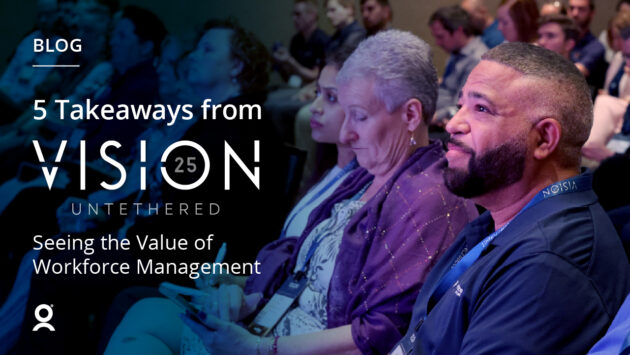Being asked to “do more with less” is not a new or unique request in business operations. Although it may seem to be a symptom of volatile economic times, operating with limited resources and an ever-increasing scope is the challenge of meeting business goals by maximizing efficiency and productivity while minimizing resource consumption.
Workforce Management Automation
In Brandon Hall Group’s (BHG) report, Workforce Management – A Constant Need in a Constantly Changing World, researchers say that the way to do more with less is through smart automation. While outdated automation systems looked only to replace human effort, modern workforce management solutions should improve the employee experience while providing insights to where employees should focus their attention. Automation should free up time to allow workers to be more strategic and let them focus on more meaningful work that reinforces a sense of belonging within your organization.
Organizational Change Management
Recognizing that outdated processes are inefficient and hinder workers from excelling at their primary tasks will lead you to look for ways to automate within your organization. As part of your company’s change management strategy, it’s important to communicate that workforce management automation isn’t solely about efficiency but also about ensuring the most human way of making business decisions is used.
Effective organizational change management (OCM) promotes successful adoption of new workforce management technology, minimizes operational disruptions, strengthens employee engagement, enables continuous improvement, and improves organizational agility.
Automated Scheduling
One of the biggest impacts you can make within your organization in relation to workforce management is through automated scheduling. Automation can create and assign schedules, implement rotating shift patterns across multiple weeks, and leverage labor forecast data to optimize schedules for highly variable staffing needs, even at 15-minute intervals.
The right workforce scheduling solution should also automatically adhere to legislative, contractual, and union work hour limits and required meals, breaks, and rest periods. Shifting scheduling practices to an automated workforce management solution takes the manager or supervisor out of the process and helps to ensure fair and predictive schedules that meet organizational needs.
Research shows that organizations can address both process efficiency and worker performance by automating time-consuming tasks to making better use of employee time by implementing comprehensive workforce solutions. Companies that can personalize employee experience in a way that makes employees feel like contributing, valued members of the organization are more likely to see rises in metrics such as customer retention, customer satisfaction, and even market share. By enhancing these teams with supportive automation of more mundane tasks, workers are free to not only focus on their core tasks, but specifically the tasks only humans can perform in ways that can’t be replicated by machines – now or ever.
The ability for employees to have a sense of meaningful work and more self-direction makes them feel part of something greater through social and collaborative projects. However, what allows them the time to engage in those types of projects is the workforce management automation happening in the background, making the most out of even the most limited of resources.
Automation as a Solution
Automating manual processes frees up valuable human resources to focus on strategic tasks, improves operational efficiency, and reduces costs.
- The Human Element: While automation is essential, it should not replace human judgment and interaction. The goal is to enhance human capabilities, not replace them.
- Data-Driven Decisions: Automation enables the collection and analysis of vast amounts of data, providing insights for better decision-making.
- Workforce Compliance and Risk Mitigation: Automation helps organizations stay compliant with labor regulations and reduces the risk of errors and penalties.
- Employee Experience: By freeing employees from mundane tasks, automation can enhance job satisfaction and create opportunities for growth.
- Business Agility: Automated workforce management systems enable organizations to adapt quickly to changing business conditions and market demands.
WorkForce Software is a pioneer in our industry as a global provider of modern workforce management software. Our solution is designed to leverage automation, data, and advanced analytics in real time to create personalized experiences in the workflow and support your ability to adapt quickly.
Experience for yourself why the WorkForce Suite should be your number one choice for creating schedules that delight both your employees and customers. Get a live demo.




